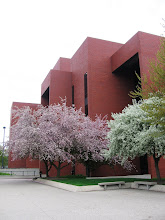Danny L. Taylor Receives Prestigious Jane Morton Award

Danny L. Taylor, Periodical/Reserves Assistant at Ball State University Libraries, is the recipient of the A. Jane Morton Award for Excellence in Staff. Danny received the award during the 43rd Annual Staff Recognition and Retirement Award program on April 17, 2008.
With 37 years of service to the University, Danny is well known within the Ball State community for his optimistic attitude, dedication, and superior customer service skills. Former students frequently ask about Danny and comment on how he has inspired them to make positive differences in their own and other people's lives.
Kathleen Pickens-French, Access Services Evening Supervisor, nominated Danny for the award.
“Danny’s love of life, Ball State and Bracken, inspires the people he meets,” says Kathleen. “His dedication extends beyond the library’s walls and into the university community where he takes the time to meet with students and to talk to classes about working with people with disabilities. Students walk away from these brief encounters with altered perspectives, increased awareness, and renewed appreciation for their own lives.”
“It is a real pleasure to work in the library,” Danny said. “I get up every morning and look forward to coming to work at Ball State. It makes me feel like I’m part of a big family.”
The recipient of the A. Jane Morton award receives a $1,000 gift, a framed and engraved "Between the Buildings ... is the Life" print, and a book of nomination and support letters.
The A. Jane Morton Award recognizes one exemplary full-time staff person for demonstrating continuous commitment and service to all facets of the Ball State community. A committee analyzes the achievements and contributions of each nominee and determines who is most deserving for going above and beyond expectations at work, for their active involvement on campus, and for their service to the greater community.
Labels: Ball State, Danny Taylor, Jane Morton Award, Libraries









